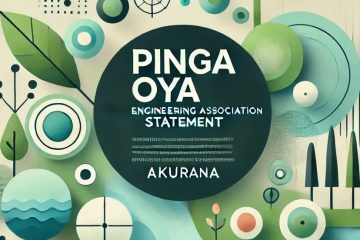Review of the SLLDC report – February 2024
Published by EAA on
The Sri Lanka Land Development Corporation (SLLDC) has been tasked with leading the initiative to tackle flooding in Sri Lanka after the previous efforts of the DMC in 2014 and UDA in 2022, which did not successfully mitigate the flood risk.
SLLDC’s report was released following a request from the Additional Secretary to the President through the Ministry of Housing and Urban Development on December 20. This request was preceded by a meeting involving officials, politicians, and community representatives at the Akurana AGA office. A subsequent meeting at the President’s House in Kandy included politicians, district officials, and various government agencies, where they were asked to conduct a comprehensive study of hydrology and flood mitigation. After a site visit, SLLDC finalized the report one month later.
Review of the SLLDC report- February 2024
Introduction
This report seeks to address the recurring flood issues in Akurana by identifying root causes and proposing mitigation strategies. It was requested on 17.12.2023 by the President’s office in Kandy from the Sri Lanka Land Development Corporation (SLLDC). The report seeks to improve storm water drainage and flood management in the Pinga Oya catchment. It has been distributed only among few officials and is not available for public access.
This report seeks to address the recurring flood issues in Akurana by identifying root causes and proposing mitigation strategies. It was requested on 17.12.2023 by the President’s office in Kandy from the Sri Lanka Land Development Corporation (SLLDC). The report seeks to improve storm water drainage and flood management in the Pinga Oya catchment. It has been distributed only among few officials and is not available for public access.
Identifications of unauthorized constructions
The report provides a useful and updated list developed by the UDA of illegal buildings encroaching on the Pinga Oya and obstructing river flow. These details were collected from a building survey conducted in 2015 and updated in 2021.
Shortcomings of the SLLDC report
The report has significant gaps, shows plagiarism and falls short on logic and in sections shows ignorance of ground reality. For example, there is ignorance about all the rain gauges within the catchment. The report claims the success of previous dredging works. It does not learn lessons from previous flood mitigation efforts by DMC and UDA. It does not address governance problems. Societal and environmental understandings are also missing from the report. Several sections contain information from ours and others’ studies; but the attribution to these sources is missing.
Financial proposal
The SLLDC report proposes to undertake a hydrological study and canal dredging itself. The financial proposal for providing consulting services for the hydrological study and mitigation proposals is 23 million rupees. The lack of awareness of all the past relevant work means that this proposal is asking for funds for work that is already done. The proposal for canal dredging work is 50 million rupees. There is self-dealing here – in that as a government organization they are angling for non-competitive funding. Ultimately, they would repeat work and they would not solve the problems.
Lessons not adequately learnt from previous efforts
There have been earlier flood mitigation attempts by government organizations, but the report does not refer or build on these past initiatives. Additionally, several relevant research proposals by external organizations and independent researchers addressed measures not inform the report. There are multiple studies on hydrological modeling, flood analysis and land use/land cover and societal studies. This level of ignorance is sad since this report was presented in a meeting at the Central Province Council – here neither the officials and the favored civil society representatives don’t bring these issues out.
Reliance on Dredging without proper evidence
The report proposes dredging as the primary solution for mitigating floods, drawing parallels with earlier de-silting efforts in 2015, which the SLLDC deemed successful based on anonymous quotations by unnamed villagers.
Finally, the report claims to propose a holistic solution – but there is a basic lack of awareness of societal issues and environmental issues – it shows the blindness of old engineering approaches of treating the Pinga Oya floods as an opportunity for dealing with this simply as a problem of water conveyance. Once again the Pinga Oya flooding, environmental destruction and biological pollution is being treated as a Beggars Wound.
Finally, the report claims to propose a holistic solution – but there is a basic lack of awareness of societal issues and environmental issues – it shows the blindness of old engineering approaches of treating the Pinga Oya floods as an opportunity for dealing with this simply as a problem of water conveyance. Once again the Pinga Oya flooding, environmental destruction and biological pollution is being treated as a Beggars Wound.



0 Comments